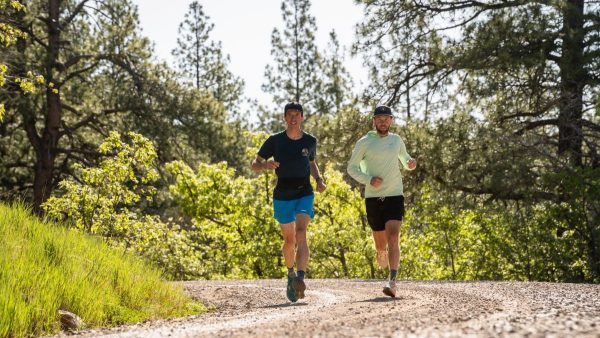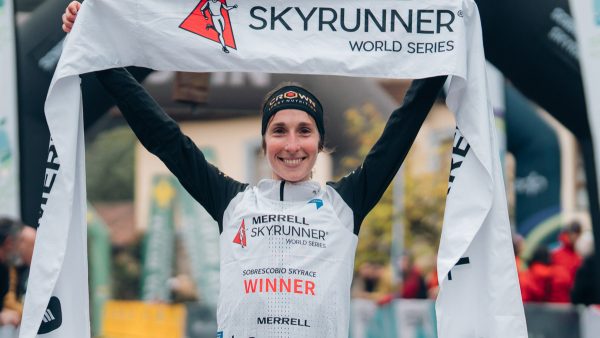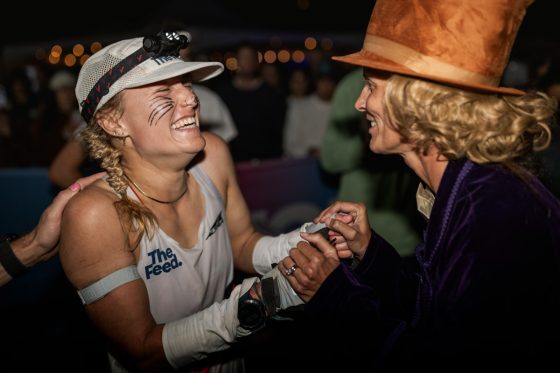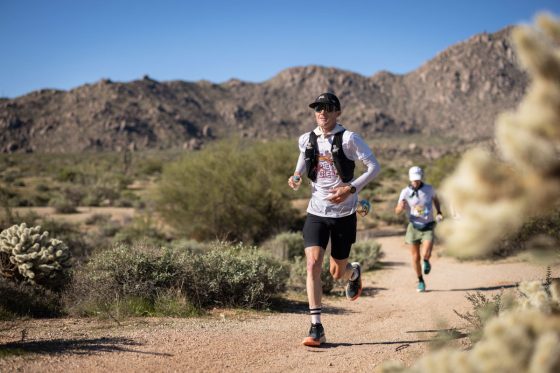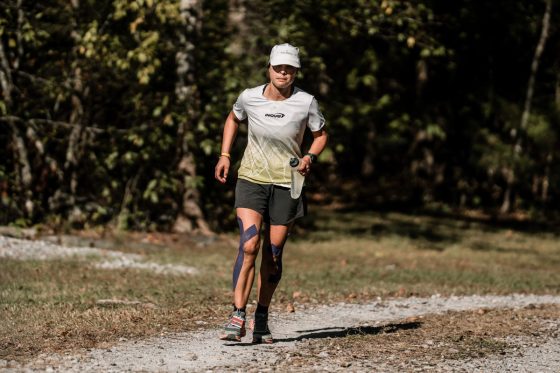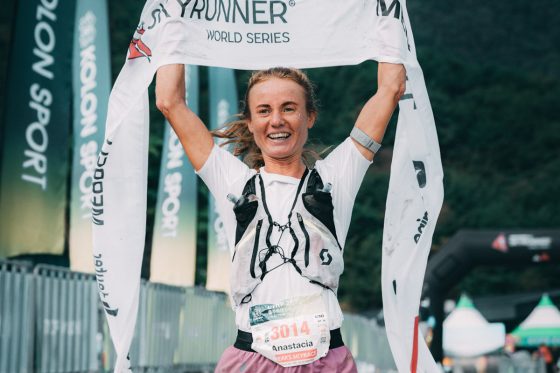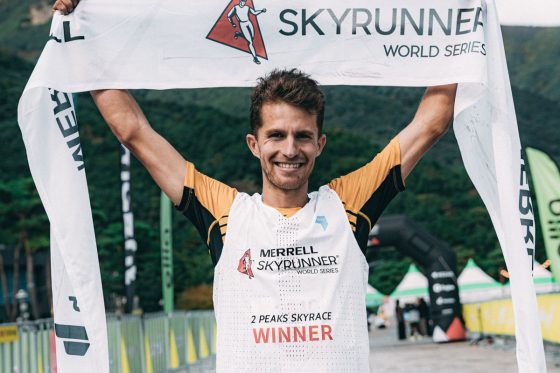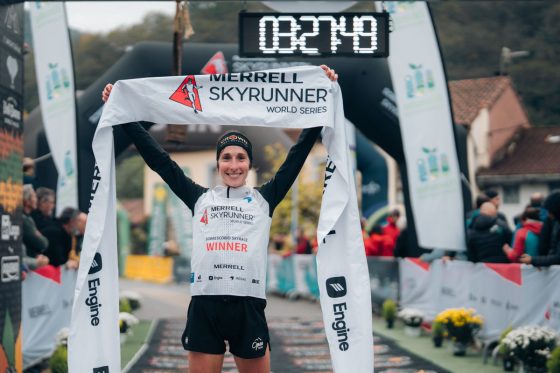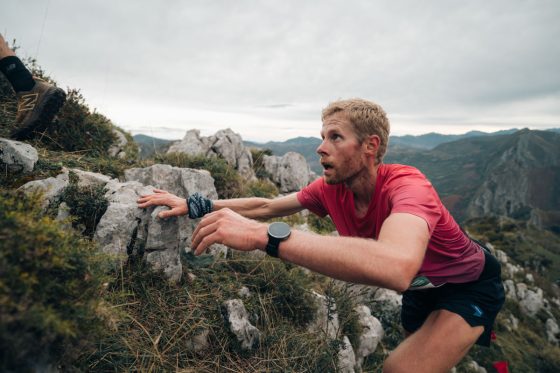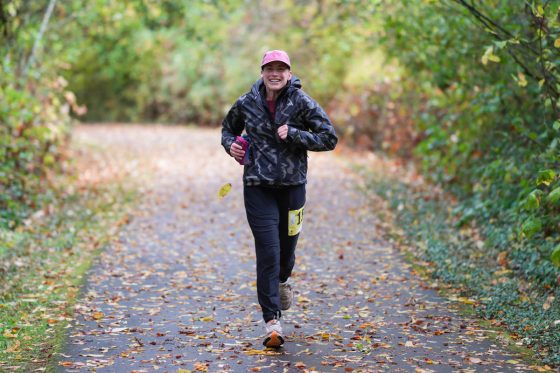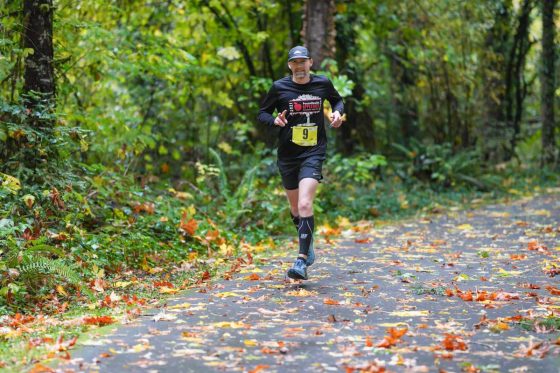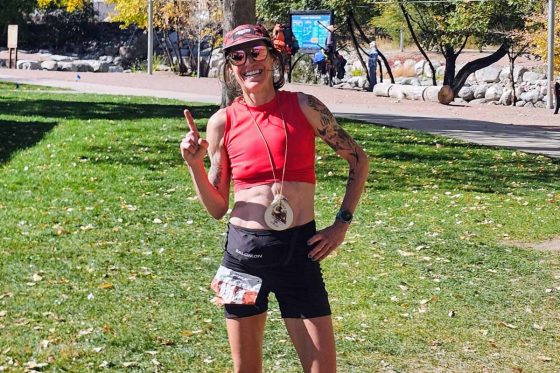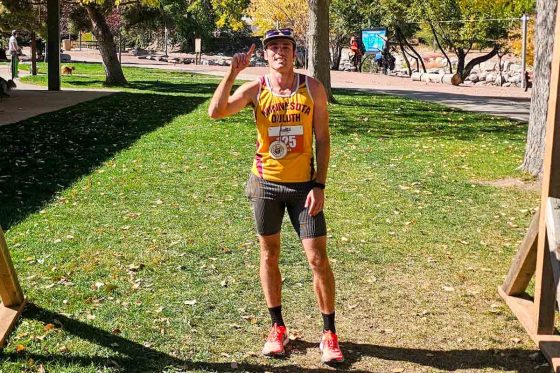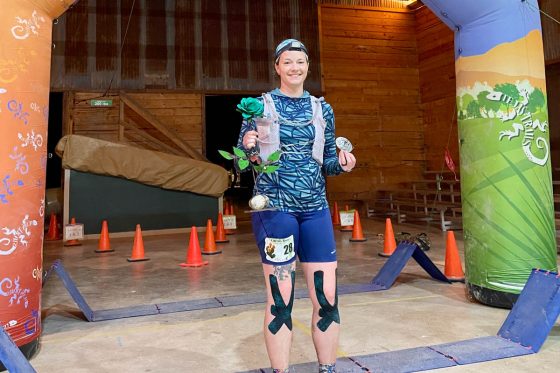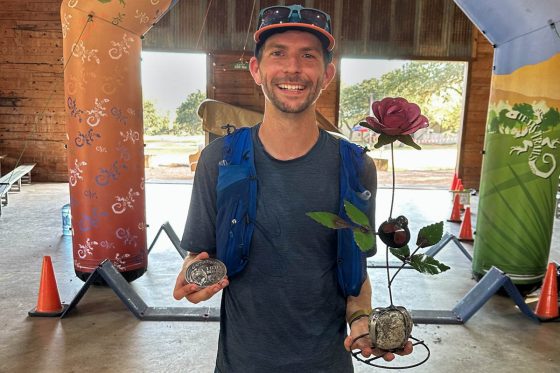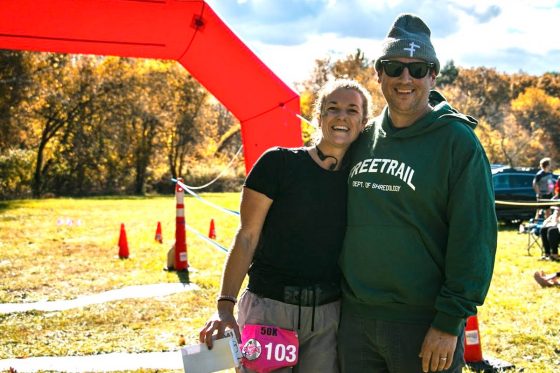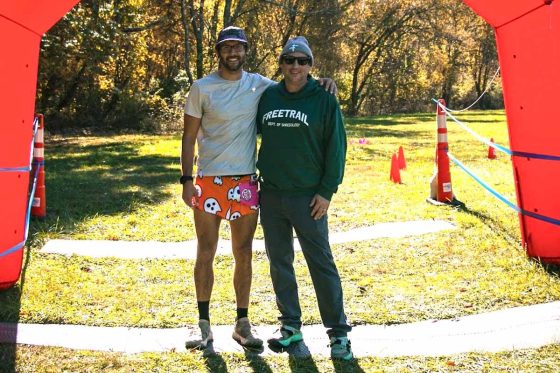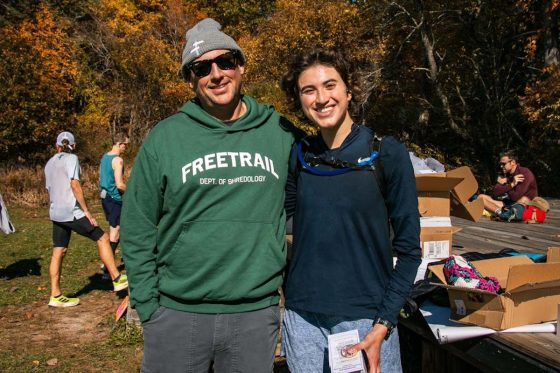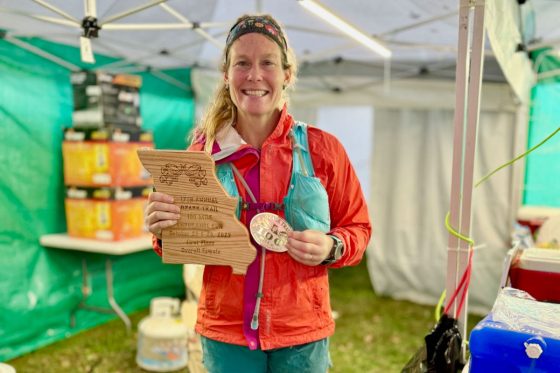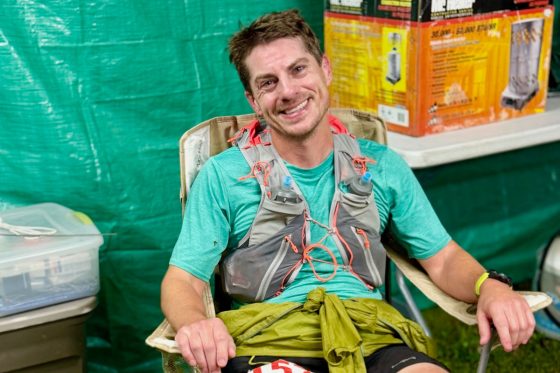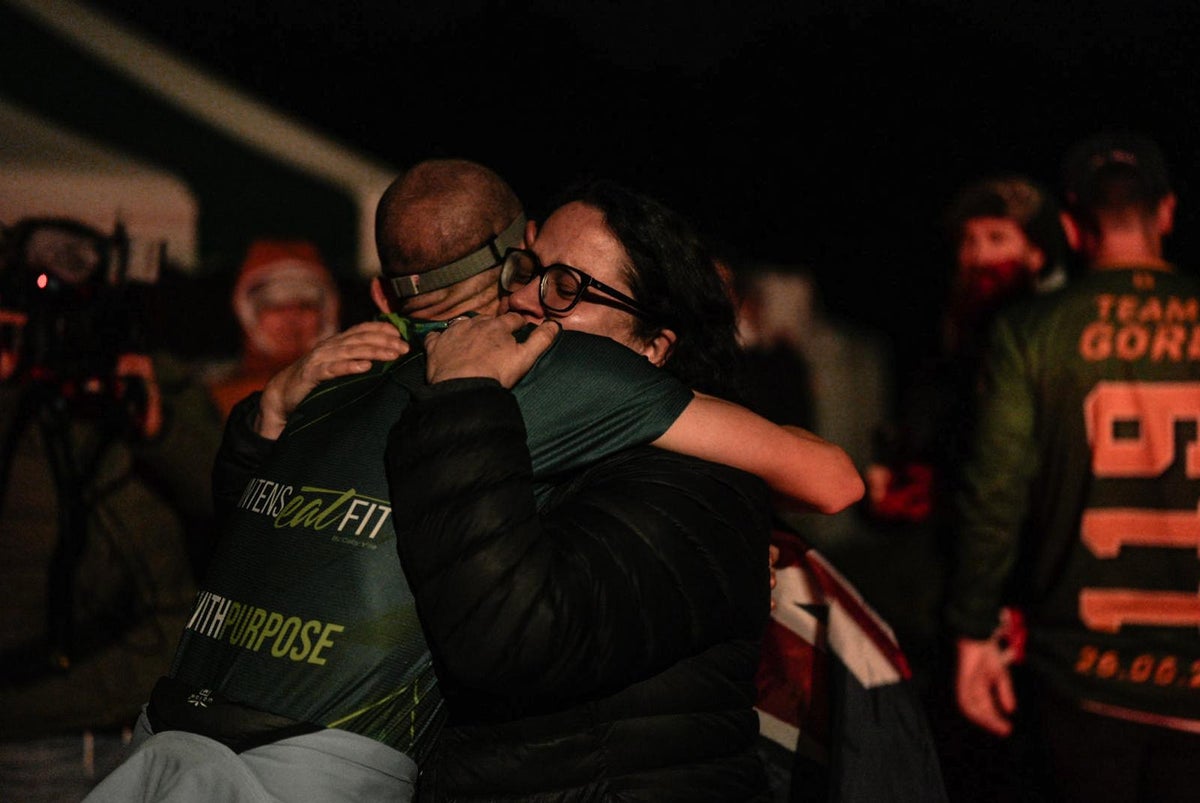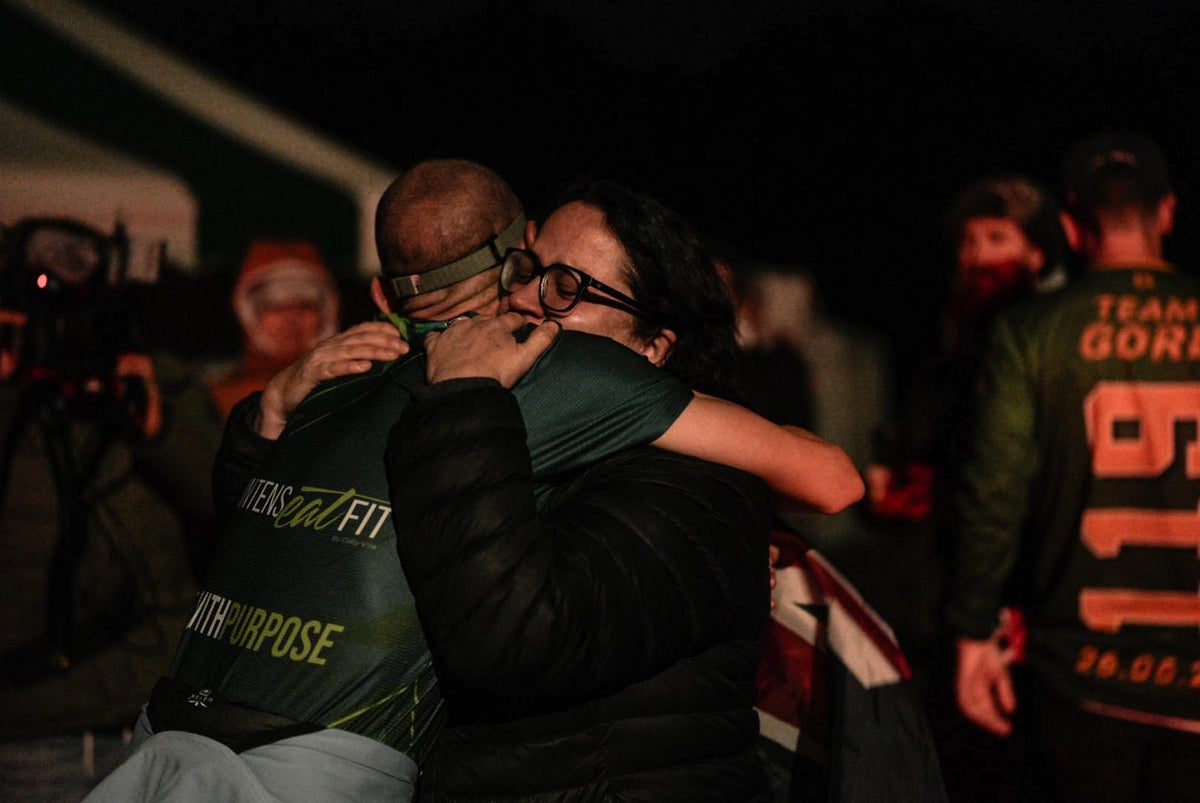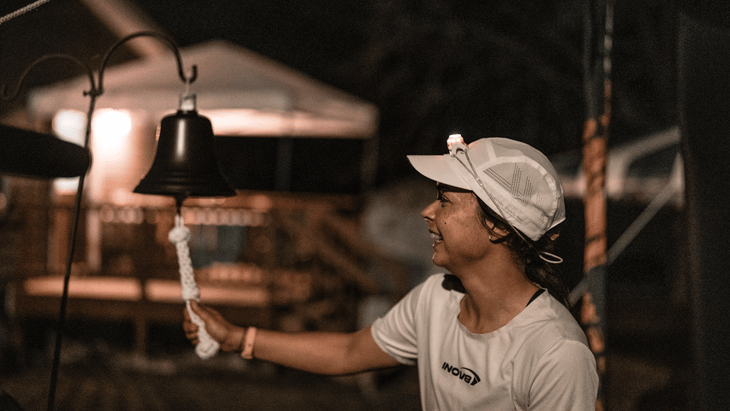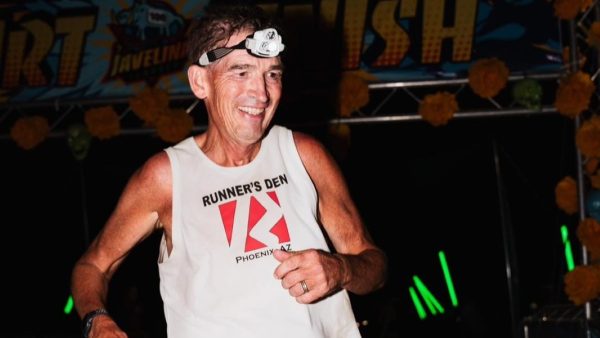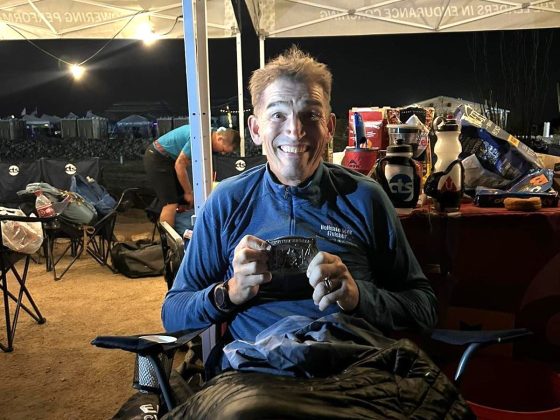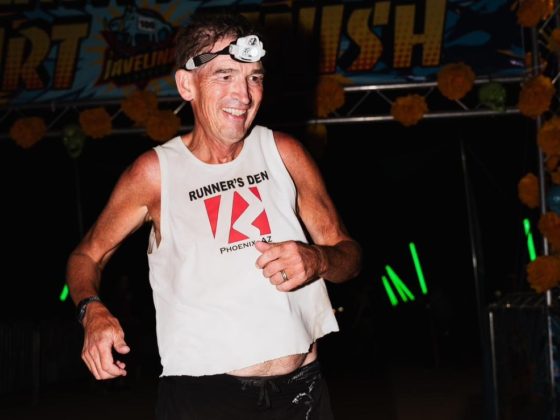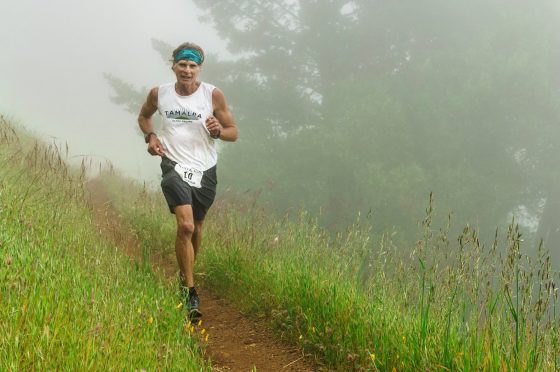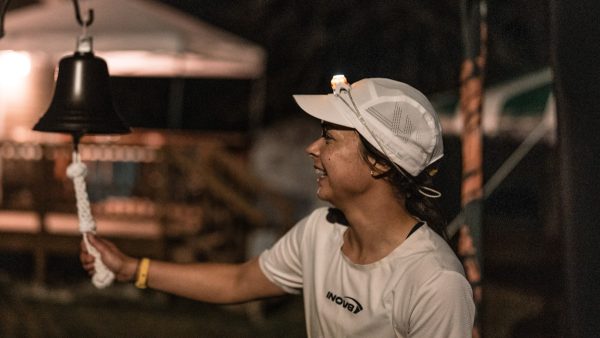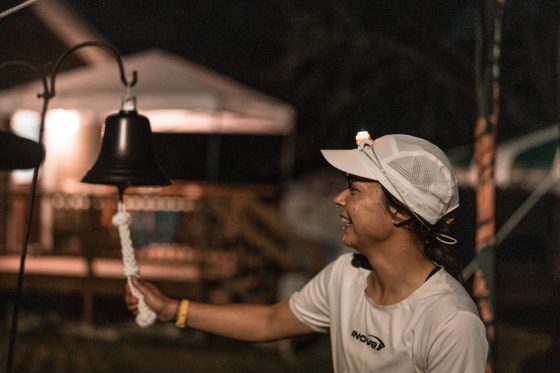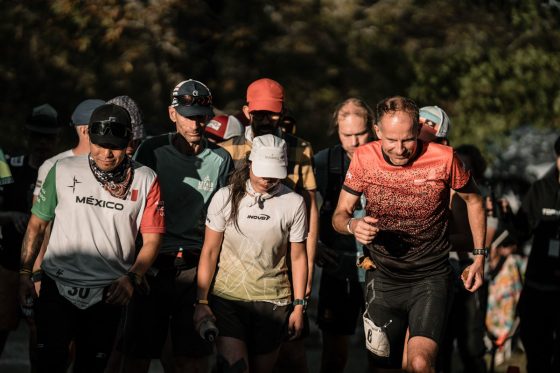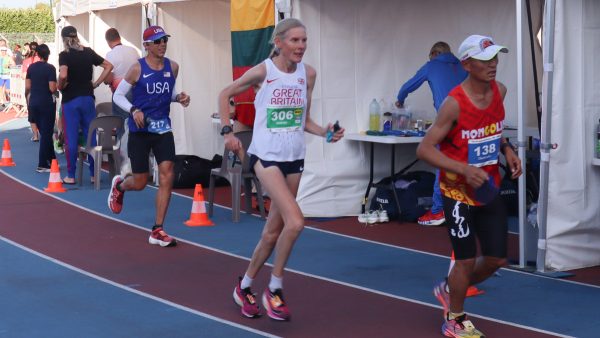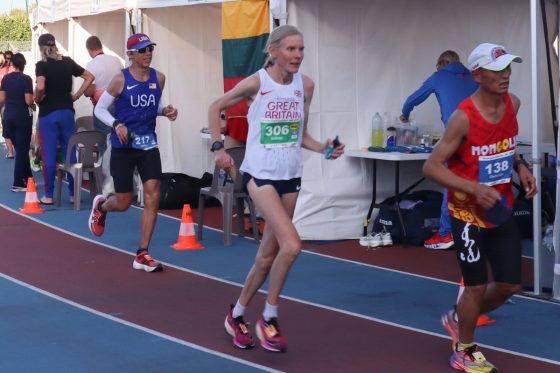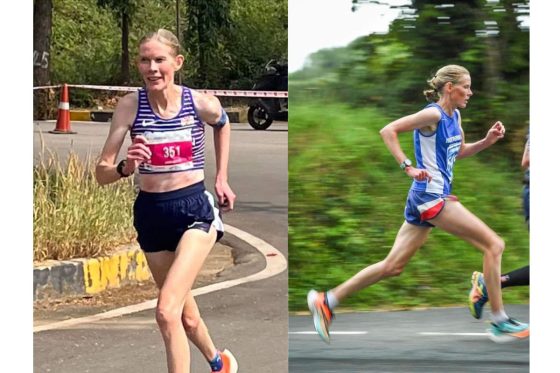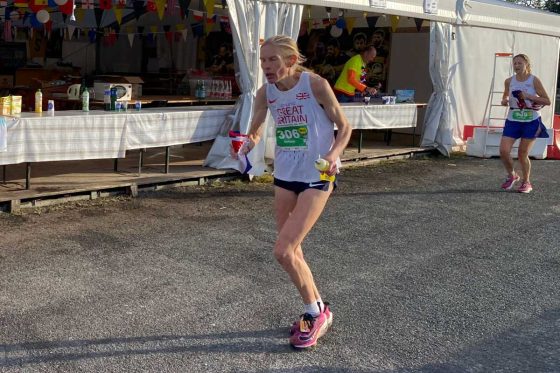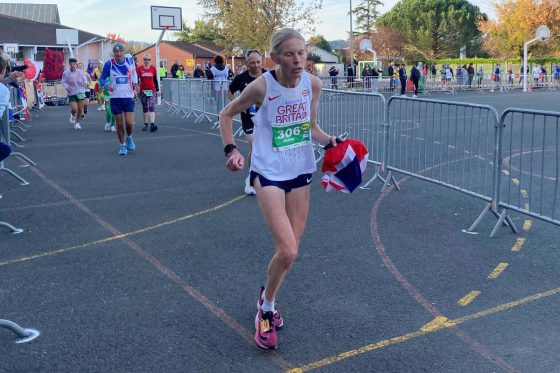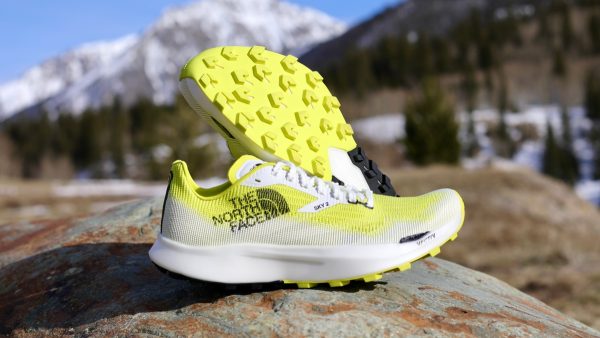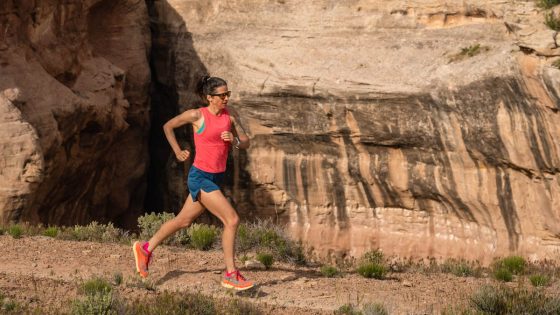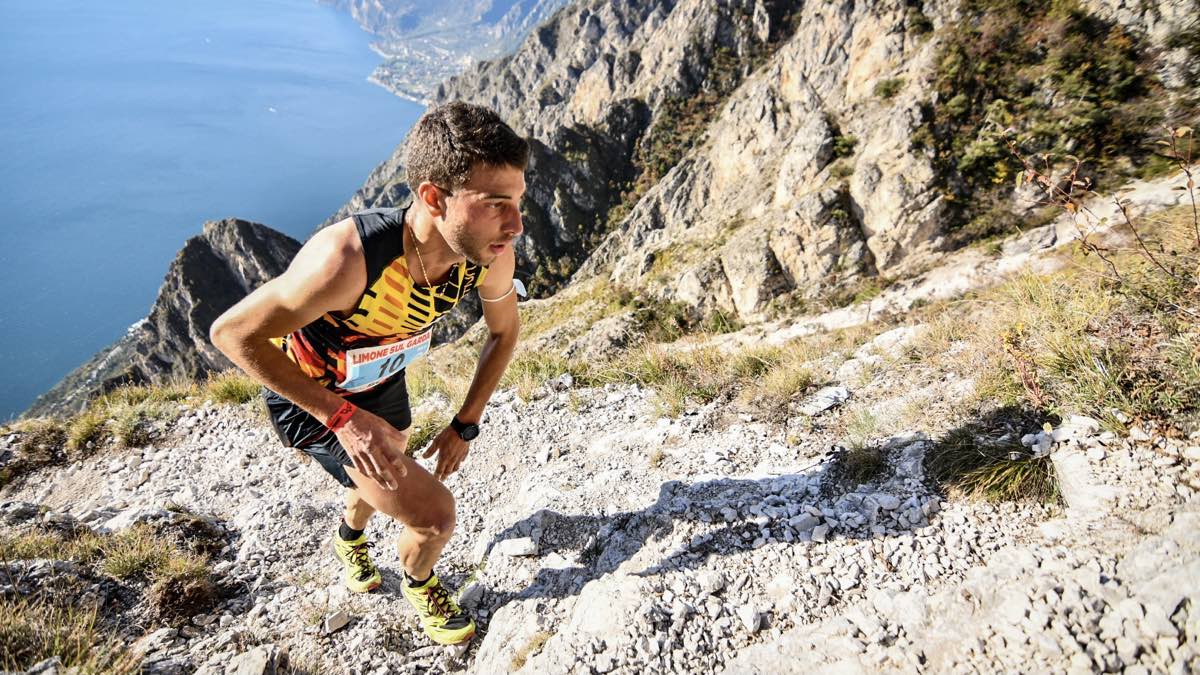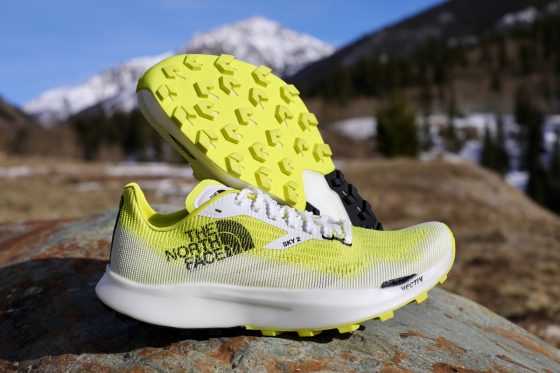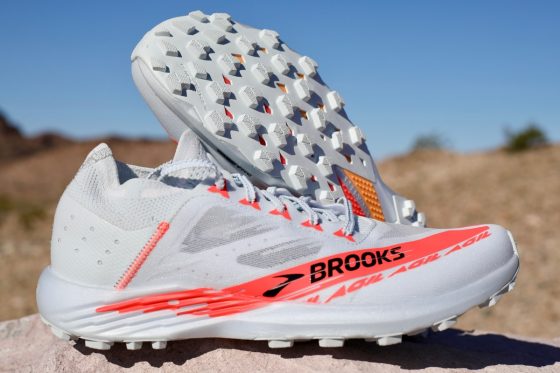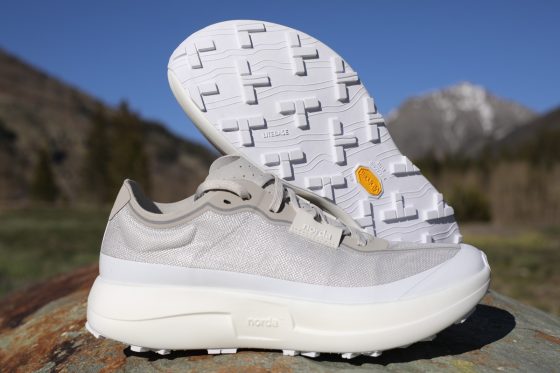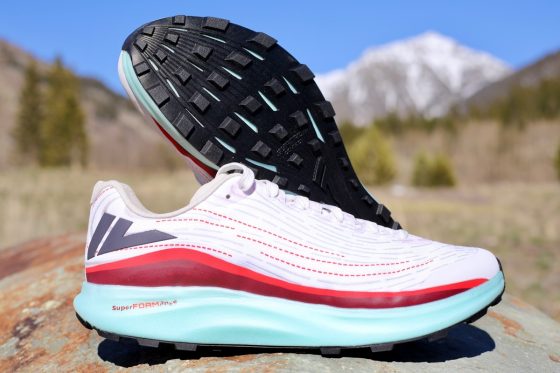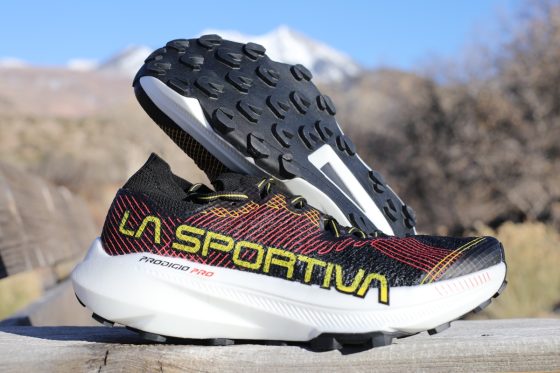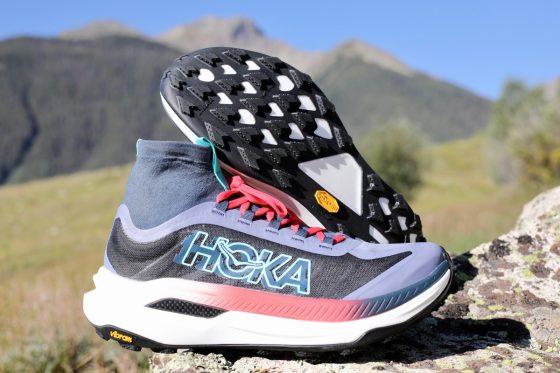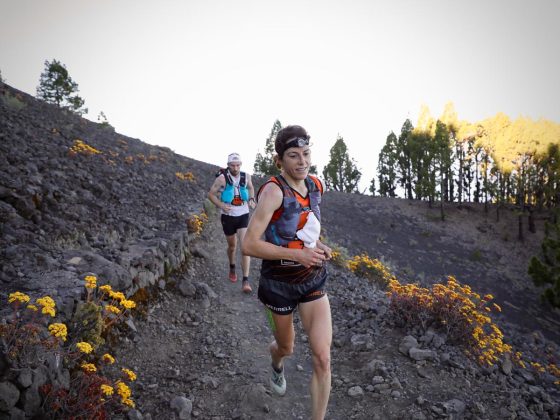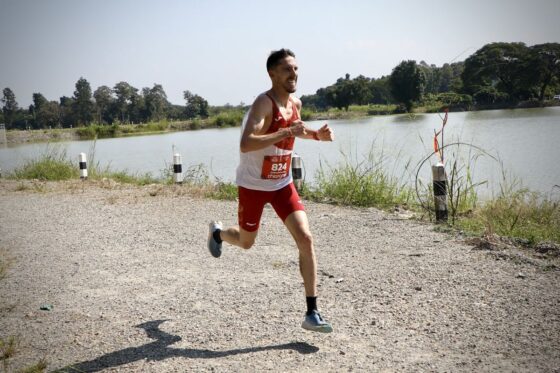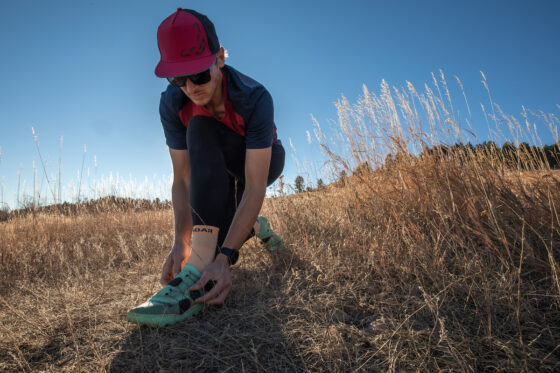The post Best Road-to-Trail Shoes of 2025 appeared first on iRunFar.
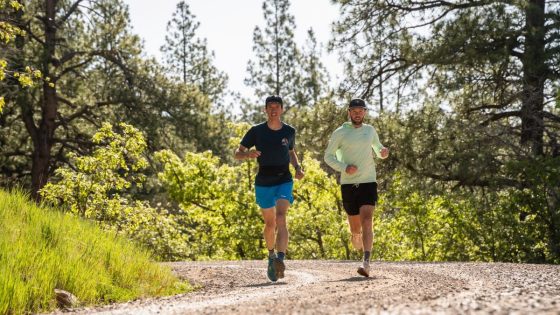
Out of necessity or preference, many runners will traverse multiple surfaces throughout the course of a single run, and the best road-to-trail shoes will handle this varied terrain with ease. Whether it’s by adeptly transitioning between pavement and trail or providing a comfortable ride on dirt roads, road-to-trail shoes are versatile options that many runners have in their shoe rotation. Not for the first time, they’ve once again exploded in popularity recently, with seemingly a new option on the market every time you check.
Naturally, you might have some questions: What are road-to-trail shoes, and do I need them? Are they different from gravel shoes? Can I just run in my trail shoes on the road or road shoes on the trail?
Our team is here to answer those questions and help you parse through the endless options. While we have longstanding and frequently updated guides on the best road running shoes and the best trail running shoes, this is our first guide on the best road-to-trail shoes. Our product recommendations include shoes that our testing team have been using for years on both roads and trails, and some that are newer to us. In all cases, our testers logged at least 100 miles — and usually much more — in every shoe in this guide before making their recommendations. They ran on a variety of surfaces — roads and trails, of course, but also gravel and packed dirt, from Colorado to California to North Carolina, all in the hope of helping you find the best road-to-trail shoes for your needs.
Our team’s favorite road-to-trail shoe was the Nike Pegasus Trail 5, and our testers loved the adidas Terrex Agravic Speed Ultra for fast efforts. They also turned to some classics, like the Brooks Cascadia 19 and Hoka Torrent 4, when runs traversed several surface types.
After reading our product reviews, check out a glossary of common shoe terminology, our buying advice for shoes, a summary of our testing methodology, and answers to some frequently asked questions about the best road-to-trail shoes.
Best Road-to-Trail Shoes
- Best Overall Road-to-Trail Shoe: Nike Pegasus Trail 5
- Best Overall Road-to-Trail Shoe — Runner-Up: Brooks Cascadia 19
- Best Cushioned Road-to-Trail Shoe: Hoka Challenger 8
- Best Road-to-Trail Shoe for Racing: adidas Terrex Agravic Speed Ultra
- Best Road-to-Trail Shoe for Grip: Inov8 Trailfly
- Best Zero-Drop Road-to-Trail Shoe: Altra Mont Blanc Carbon
- Other Great Road-to-Trail Shoes: Hoka Torrent 4, Nike Pegasus 41, Merrell Antora 4
Best Overall Road-to-Trail Shoe: Nike Pegasus Trail 5 ($155)
Actual Weight (U.S. men’s 9): 10.2 oz (290 g) | Stack Height (heel/toe): 37/27 mm | Drop: 9.5 mm
Pros:
- Tremendous midsole foam
- Breathable and comfortable upper
- Can handle almost everything
Cons:
- Not the best performer on technical trails
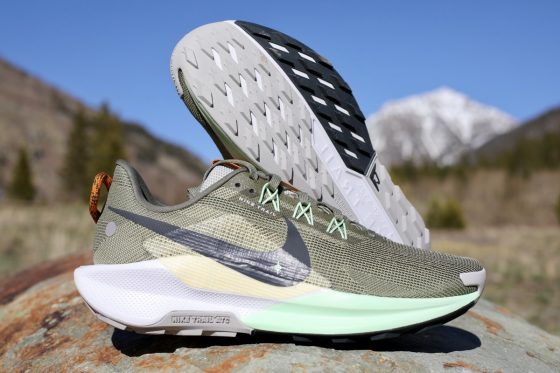
The Nike Pegasus Trail 5 has everything you’d want in a road-to-trail shoe. It’s incredibly comfortable, versatile, and durable, making it our top pick for this guide.
Any discussion of this shoe has to begin with its midsole, which Nike upgraded to its ReactX foam. This is the brand’s high-end foam behind only its premium ZoomX, which comes in most of its more expensive shoes. The foam is lively and provides tremendous cushion, most noticeably when the run approaches double-digit mileage or transitions between roads and trails. After running 150 miles in these shoes, our primary tester experienced no signs of compression in the midsole and said the shoes felt as comfortable as ever.
The upper is also top-notch. It’s a single layer of highly breathable mesh with well-placed overlays to help keep out dirt, sand, and moderate amounts of water. The ankle collar, particularly around the Achilles notch, is also much improved from previous versions, and a gusseted tongue stays in place and protects the top of the foot well.
Nike redesigned the outsole by making it wider and utilizing a proprietary rubber material that improves the grip and makes it less stiff on roads and packed dirt. This is not the shoe to take on highly technical trails, as it struggles with traction in those conditions.
For the roads and less technical trails and runs that feature them both, this shoe is hard to beat, making it one of our top picks in our Best Trail Running Shoes and Best Nike Running Shoes guides.
You can read more about this shoe in our full Nike Pegasus Trail 5 review.
Shop the Men’s Nike Pegasus Trail 5Shop the Women’s Nike Pegasus Trail 5
Best Overall Road-to-Trail Shoe — Runner-Up: Brooks Cascadia 19 ($150)
Actual Weight (U.S. men’s 9): 10.7 oz (303 g) | Stack Height (heel/toe): 35/29 mm | Drop: 6 mm
Pros:
- Strong balance between agility and protection
- Can handle technical terrain
- Energetic and well-cushioned ride
Cons:
- High-volume toebox is not for runners with narrow feet
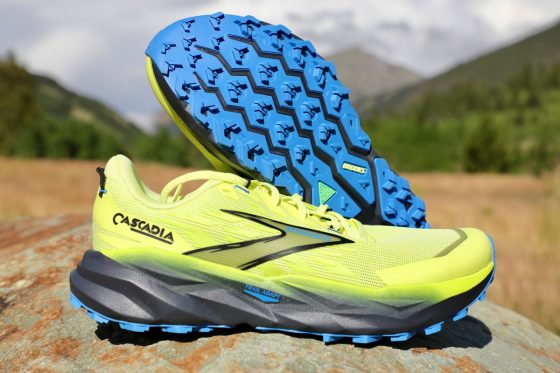
The Cascadia line has been around for more than two decades, and the Brooks Cascadia 19 was our tester’s favorite version thus far. It strikes a near-perfect balance between dynamism and protection, allowing it to be a go-to shoe for your road-to-trail adventures.
While most of the other shoes in this guide are primarily suited for smooth trails, this shoe can handle more rugged terrain. In fact, our tester’s first run in these shoes was an 11-mile adventure through the rocks and rubble of Colorado’s Front Range, and they performed admirably. With 4-millimeter lugs that shed mud easily and a durable, sticky TrailTack Green outsole, they offer ample traction for the trails without being overbearing for the roads. If your road-to-trail runs hit more technical trails, this shoe would be a worthy companion.
Even better, they’re also light and agile enough for smoother surfaces. Brooks dropped the weight of this shoe to 10.7 ounces (U.S. men’s 9) and added its nitrogen-infused DNA Loft v3 foam in the midsole, creating a zippy, well-cushioned ride on roads and smooth trails. For a shoe that’s been clunky in the past, this version of the Cascadia is a refreshing change, making it one of our top choices for road-to-trail runs. It also appears in our Best Trail Running Shoes guide.
You can also read more about this shoe in our full Brooks Cascadia 19 review.
Shop the Men’s Brooks Cascadia 19Shop the Women’s Brooks Cascadia 19
Best Cushioned Road-to-Trail Shoe: Hoka Challenger 8 ($155)
Actual Weight (U.S. men’s 9): 9.3 oz (264 g) | Stack Height (heel/toe): 42/34 mm | Drop: 8 mm
Pros:
- Offers a smooth ride on roads and light trails
- Well-cushioned and comfortable
Cons:
- Does not perform well on technical trails
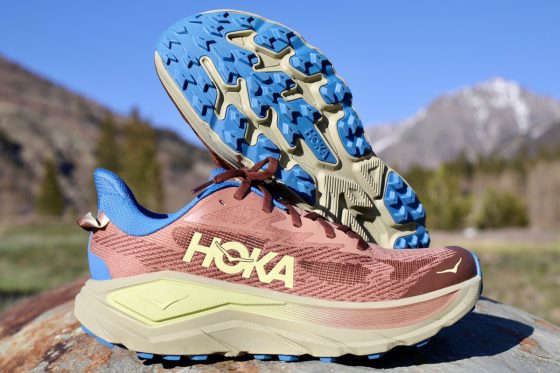
The Hoka Challenger 8 can sop up miles on pavement, dirt, and non-technical trails along with the best of them. Like many Hoka shoes, it has ample cushion — it’s often described as the trail version of the Hoka Clifton — and this version significantly increased the stack height to 42 millimeters for men and 39 millimeters for women for an even plusher ride. Both of our testers said that even with this extra cushion, the shoes don’t feel mushy, but it still could be too much for runners used to more responsiveness and a close-to-the-ground feeling.
The outsole features moderate 4-millimeter lugs, which offer a smooth ride for roads and trails. Our testers loved this shoe for those surfaces and everyday easy runs, but they noted that it didn’t perform as well on more technical terrain or faster efforts. After splashing through creeks, this shoe drained and dried well, and after 130 miles, it has shown minimal wear.
Overall, it’s a durable, comfortable shoe that we loved for everyday road-to-trail runs.
Keep your eyes open for a full Hoka Challenger 8 review.
Shop the Men’s Hoka Challenger 8Shop the Women’s Hoka Challenger 8
Best Road-to-Trail Shoe for Racing: adidas Terrex Agravic Speed Ultra ($220)
Actual Weight (U.S. men’s 9): 9.5 oz (269 g) | Stack Height (heel/toe): 42/34 mm | Drop: 8 mm
Pros:
- Fast, lively, and versatile
- Great upper
- Stylish
Cons:
- Expensive
- Not for heel strikers or technical trails
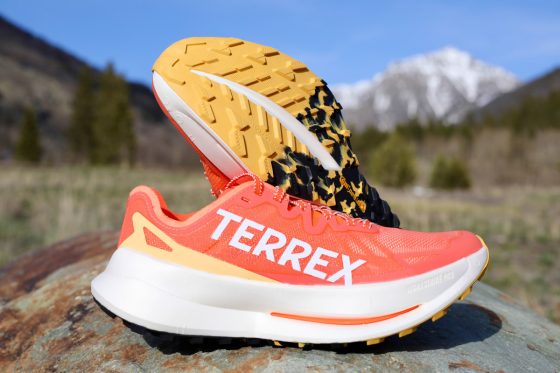
The adidas Terrex Agravic Speed Ultra is the brand’s ultramarathon racing shoe, worn by many runners hunting podium finishes at some of the biggest races in the world. Professional trail runner Ruth Croft won the 2022 Western States 100 in a prototype of this shoe, while Tom Evans followed suit in the 2023 race. Those victories underscore the best features of this shoe: It’s fast, lively, and designed for running on relatively smooth surfaces.
While most super shoes opt for a carbon plate in the midsole, this shoe features four PEBA-composite rods, spread out toward the edges of the forefoot with two more prongs extending to the heel. The result is enhanced stability without the typical rigidity of a carbon plate, making it uniquely suited to running on smooth trails. Combined with two layers of the brand’s Lightstrike Pro Foam, the same foam adidas uses in its road racing shoes, the shoe offers a fast, responsive ride. Our tester appreciated this shoe’s upper as well. “The upper material is quite thin but actually has a lot of structure,” he said. “I found that it became a little more forgiving over time and became more comfortable.”
The most polarizing aspect of this shoe is its rocker. It’s aggressive, it’s extreme, and if it works for your foot, it’s extremely effective. The rocker, plus the midsole features, is what makes this shoe so fast, but it comes at the admittedly significant expense of stability for certain types of runners. The rocker is designed seemingly exclusively for forefoot and midfoot strikers, offering an incredibly fast and fun ride for those runners. But for heel strikers, it’s a different story. Some heel strikers find that the rocker begins so far forward that they simply can’t run in the shoe, so if you know that you land toward the back of your foot when you run, we’d suggest pursuing a different option.
On the outsole, the lugs are only 2.5 millimeters deep, making it a viable option for road-only runs, too. Our primary tester has used it in that capacity plenty of times and found that the lugs don’t drag along the pavement. Because of its 42-millimeter stack height and the aggressive rocker, this shoe doesn’t perform well on technical trails, so we’d recommend another option if your road-to-trail runs involve more technical terrain. But if you’re a midfoot or forefoot striker seeking a fast shoe for smooth roads and trails, this shoe will be a worthy companion on race day.
You can read more about this shoe in our full adidas Terrex Agravic Speed Ultra review.
Shop the Men’s adidas Terrex Agravic Speed UltraShop the Women’s adidas Terrex Agravic Speed Ultra
Best Road-to-Trail Shoe for Grip: Inov8 Trailfly ($150)
Actual Weight (U.S. men’s 9): 9.6 oz (274 g) | Stack Height (heel/toe): 29/23 mm | Drop: 6 mm
Pros:
- Excellent grip on dry, hard surfaces
- More natural feel without sacrificing cushion
- Nimble and responsive ride
Cons:
- Run a half-size small
- Not for wet conditions
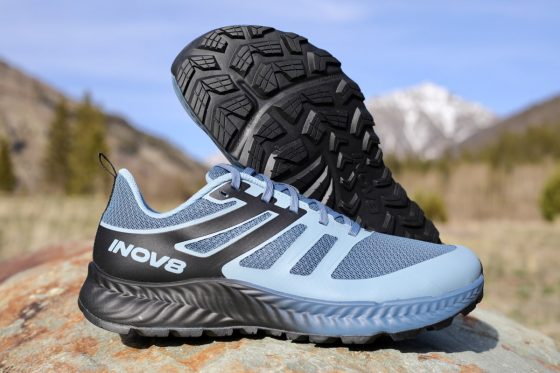
One of the drawbacks of many road-to-trail shoes is their suitability for technical terrain. Enter the Inov8 Trailfly, a grippy, lower-to-the-ground shoe with excellent traction on dry, hard-packed surfaces from pavement to technical trails. This is the shoe for those runs that feature truly varied terrain.
While Inov8, a brand born in England’s famously rainy Lake District, has carved out a niche for shoes that thrive in the mud, this shoe strikes the opposite note. With relatively low-profile 4-millimeter lugs on its sticky Graphene Grip rubber outsole, it’s designed for running on packed, dry surfaces. Our primary tester found these shoes to be comfortable on forest roads and pavement while still excelling in more technical terrain, making it an excellent choice for those who want more grip on their road-to-trail runs.
Aside from its grip, what sets this shoe apart is its anatomical fit, which Inov8 calls its Natural Fit. Our tester characterized it as the perfect balance between hugging the foot’s natural contours while still providing ample space in the toebox. With a stack height of 29 millimeters at the heel and 23 at the forefoot for a 6-millimeter drop, this shoe offers a more natural, approachable feel than many of the high-drop options that dominate the market without sacrificing cushioning. Its Powerflow Pro foam in the midsole still offers ample cushion for longer efforts, and the removable insole features hundreds of squishy foam beads to boost energy return. The upper is simple, breathable, and comfortable.
It’s important to note that these shoes tend to run small, so it’s best to order a half-size up.
You can read more about this shoe in our full Inov8 Trailfly review.
Shop the Men’s Inov8 TrailflyShop the Women’s Inov8 Trailfly
Best Zero-Drop Road-to-Trail Shoe: Altra Mont Blanc Carbon ($260)
Actual Weight (U.S. men’s 9): 9.4 oz (266 g) | Stack Height (heel/toe): 29/29 mm | Drop: 0 mm
Pros:
- Grippy outsole
- Reliable, comfortable midsole
- Race ready
Cons:
- Expensive
- More of a dirt path shoe than a road-to-trail shoe
- Zero-drop shoes aren’t for everyone
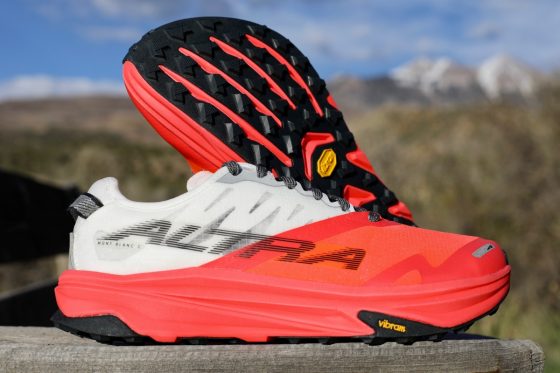
The Altra Mont Blanc Carbon is a zero-drop, carbon-plated shoe ready to move fast on moderate singletrack and gravel roads. This is the first time Altra has produced a true race-ready trail shoe.
The Vibram Megagrip Litebase outsole of this shoe shines. One of the most respected outsole materials across trail running shoes, the Megagrip lives up to its name, offering ample traction without feeling too burdensome when the surface flattens. Our tester loved this shoe on gravel roads and singletrack but found its performance diminished on pavement, so if your road-to-trail runs involve more road than trail, we’d recommend looking for a different shoe. In this way, this shoe is more of a gravel or moderate trail shoe than a road-to-trail shoe, two categories that are often conflated.
The midsole of this shoe features a full-length carbon plate that offers both propulsion when you’re moving fast and protection when the pace slows — acting as a carbon-rock plate combo. Altra used its Ego Max foam for the rim of the midsole and Ego Pro foam in the core, a combination that, along with the carbon plate, offers a fast, fun ride, making it a strong choice for race day.
Our tester noted that this shoe feels narrower than other Altra shoes she’s worn, but said it still has an ample toebox and an upper that feels breathable and secure. The shoe’s laces are, in the eyes of our tester and other reviewers, too long, a small but strange issue for a shoe, especially one that costs $260.
This shoe also has a sleeker look than many of Altra’s other options. For those who can’t stomach paying $250-plus for a pair of shoes, our tester also liked the Altra Mont Blanc Speed, which lacks a carbon plate but offers many of the same features as this shoe for $75 less.
Finally, it’s important to note that zero-drop shoes aren’t for everyone, especially those who’ve never run in them before. We always recommend doing research, figuring out what works best for you, and easing into zero-drop shoes if you haven’t run in them before.
For even more information about this shoe, you can read our full Altra Mont Blanc Carbon review.
Shop the Men’s Altra Mont Blanc CarbonShop the Women’s Altra Mont Blanc Carbon
Other Great Road-to-Trail Shoes
Hoka Torrent 4 ($130)
Actual Weight (U.S. men’s 9): 9.0 oz (254 g) | Stack Height (heel/toe): 33/28 mm | Drop: 5 mm
Pros:
- Versatile
- Performs well on technical trails
- Improved durability and stability
- Approachable price
Cons:
- Not as specialized as other options
- Deeper lugs are less ideal for road running
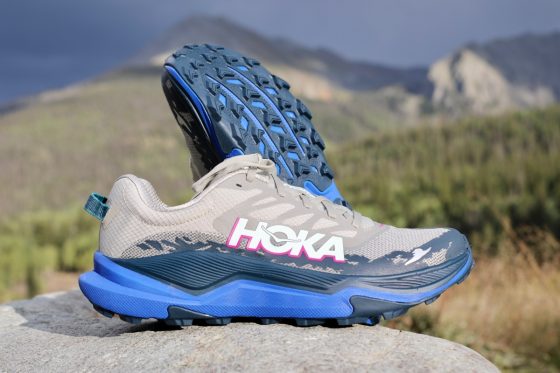
The Hoka Torrent 4 is an approachable, everyday running shoe with moderate cushion that can handle a mix of surfaces from technical trails to gravel roads. Our primary tester characterized it as “just a nice everything shoe.”
The upper provides a locked-in fit and a wider, roomier feel than previous versions. Underfoot, Hoka added two millimeters of stack height for some extra cushioning, striking a good balance between cushion and responsiveness and making it a worthy choice for everything from workouts to 100 milers. While it doesn’t have a rockplate, it’s much more stable and durable than previous versions of the shoe, which could feel packed out and mushy after just 100 miles. After 140-plus miles, our primary tester experienced no issues with excessive wear and no ankle turns, an issue that had plagued her in previous versions.
With 5-millimeter lugs, this shoe handles technical trails better than most other shoes in this guide, but it is not as adept on pavement. Aside from that, this shoe does basically everything well — and at $130, that value is hard to beat, which is why we also featured it in our Best Trail Running Shoes guide.
For an even deeper look, you can read our full Hoka Torrent 4 review.
Shop the Men’s Hoka Torrent 4Shop the Women’s Hoka Torrent 4
Nike Pegasus 41 ($145)
Actual Weight (U.S. men’s 9): 9.9 oz (281 g) | Stack Height (heel/toe): 37/27 mm | Drop: 10 mm
Pros:
- Tremendous surface and functional versatility
- Excellent outsole
- Great value
Cons:
- Requires a break-in period
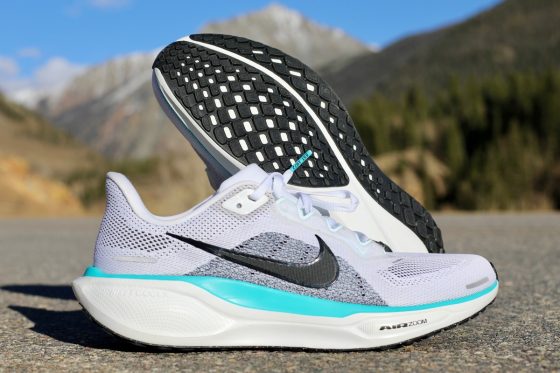
The Nike Pegasus 41 is one of our testing team’s most beloved shoes. It has appeared in multiple guides, from Best Running Shoes to Best Half Marathon Running Shoes, and its versatility on a variety of surfaces also lands it in this guide.One of the primary reasons we love this shoe so much is that it does so much so well. While this shoe is technically characterized as a daily trainer, you could use it for workouts and races, too. Nike uses its classic waffle-inspired rubber outsole on this shoe, making it a go-to option for those runs that hit multiple surfaces. Our primary tester ran in these shoes on pavement, gravel, and dirt roads, and trails — sometimes in a single run — and they were the only pair that iRunFar Founding Editor Bryon Powell wore for his course-record win at last year’s Ultra Gobi 400k, a run through the desert that traversed multiple surfaces. This outsole is one of the best we’ve ever tested.
In the midsole, Nike upgraded the cushioning to its ReactX foam, one of its premium foams that offers a smooth, comfortable ride underfoot. The upper is made of a breathable engineered mesh and has a wider fit, making it more inclusive than previous versions. Overall, this shoe is a workhorse that can do basically everything well.
You can read our Nike Pegasus 41 review for a more detailed look.
Shop the Men’s Nike Pegasus 41Shop the Women’s Nike Pegasus 41
Merrell Antora 4 ($140)
Actual Weight (U.S. women’s 10.5/men’s 9): 9.3 oz (263 g) | Stack Height (heel/toe): 29/21 mm | Drop: 8 mm
Pros:
- Lightweight and stylish
- Runs well on pavement, dirt roads, and gravel
- Women-specific fit
Cons:
- Unstable on technical terrain
- Not suited for longer efforts
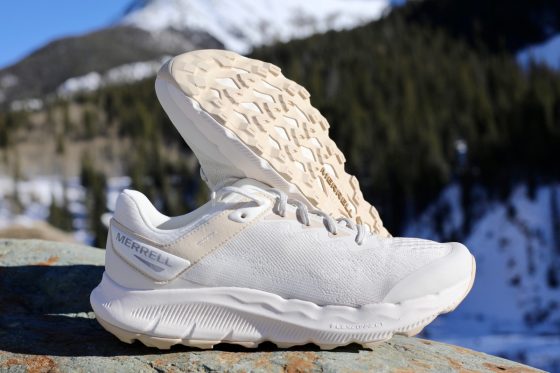
The Merrell Antora 4 is a women-specific shoe that can run well on a variety of surfaces, including pavement, gravel, smooth dirt roads, and non-technical trails. It’s another shoe that can serve multiple purposes at a lower price than more specialized options, at the expense of not excelling at anything specific.
The upper, made of engineered mesh with TPU overlays, is breathable and provides adequate protection on smooth surfaces, and after more than 100 miles of desert running, it has shown little sign of wear. On mellow terrain, the shoe feels solid, but once you hit more technical trails, you can feel its lack of lateral stability. In the midsole, Merrell uses an EVA foam, which provides decent cushioning on shorter efforts but is probably too firm for longer ones.
While Merrell classifies it as a trail running shoe, we’d put it in a less robust category due to its lack of rockplate and robust cushioning. The outsole features durable 3-millimeter lugs that transition well between surfaces but do not provide enough grip for technical, loose, or muddy trails.
Style is, of course, subjective, but this is one of those shoes that stands out because of the way it looks. Our tester said that it looked “petite” and comes in several appealing colorways, including some floral prints, making it a shoe that wouldn’t look out of place in non-running contexts. You could wear them to the grocery store or coffee shop without, in the words of our primary tester, “your look screaming Trail Runner.”
Overall, this is a solid option for those seeking a women-specific shoe that looks good and performs well on roads, gravel, and light trails. The men’s version of this shoe is the Merrell Nova 4.
For a more in-depth look, you can read our Merrell Antora 4 review.
Shop the Women’s Merrell Antora 4
Comparing the Best Road-to-Trail Shoes
| SHOE | PRICE | WEIGHT | DROP | DISTINGUISHING FEATURE |
| Nike Pegasus Trail 5 | $155 | 10.2 ounces | 9.5 millimeters | Go everywhere versatility |
| Brooks Cascadia 19 | $150 | 10.7 ounces | 6 millimeters | Rugged enough for technical terrain |
| Hoka Challenger 8 | $155 | 9.3 ounces | 8 millimeters | Plush cushioning |
| adidas Terrex Agravic Speed Ultra | $220 | 9.5 ounces | 8 millimeters | Speedy shoe for non-heel strikers |
| Inov8 Trailfly | $150 | 9.6 ounces | 6 millimeters | Grip on dry ground |
| Altra Mont Blanc Carbon | $260 | 9.4 ounces | 0 millimeters | Speedy shoe for low-drop lovers |
| Hoka Torrent 4 | $130 | 9.0 ounces | 5 millimeters | Affordable go anywhere shoe |
| Nike Pegasus 41 | $145 | 9.9 ounces | 10 millimeters | Truly versatile road shoe |
| Merrell Antora 4 | $140 | 9.3 ounces | 8 millimeters | Women’s specific fit |
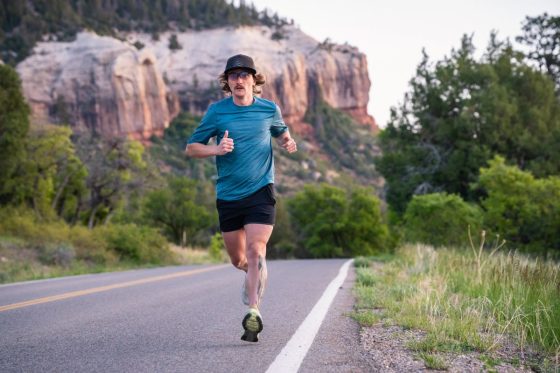
Glossary
- Road-to-Trail Shoe: A shoe that is designed for running on both roads and trails. Depending on their construction, road-to-trail shoes can serve you well on several surfaces, from pavement to trails to packed dirt and gravel roads. Road-to-trail shoes typically feature a blend of features typically associated with road shoes and trail shoes, like ample midsole cushioning, lugs, and rock plates. None of the shoes in this guide are designated as road-to-trail shoes, but all tick the various boxes that make them good on a variety of surfaces.
- Stack Height: The amount of cushion between your foot and the ground, measured in millimeters at the heel and forefoot. Though stack heights can range from 10 millimeters to 40-plus millimeters, they typically fall between 25 and 35 millimeters for most shoes.
- Drop: The difference in stack height between the heel and toe, measured in millimeters. Higher drops indicate more cushion at the heel than at the forefoot, and often mean the shoe is better suited for heel strikers. A lower drop indicates the cushion is more evenly dispersed throughout the shoe and helps create a more responsive ride. Low-drop shoes are typically better for midfoot or forefoot strikers. Drop is also often called “heel-to-toe drop” or “offset.”
- Upper: The top of the shoe, which includes everything above its midsole
- Midsole: The layer(s) of foam between a shoe’s outsole and upper. The midsole is often considered the most important part of a shoe because it provides the cushion.
- Outsole: The bottom of the shoe, usually made of a rubber-like compound, that makes contact with the ground.
- Lugs: The small rubber cleats on the shoe’s outsole that provide traction on trails and other unpaved surfaces. Road-to-trail shoes typically have lugs 2 to 4 millimeters deep.
- Toebox: The front part of the shoe, which surrounds the ball of the foot and toes. Runners with wider feet will want to search for shoes with a wider toebox.
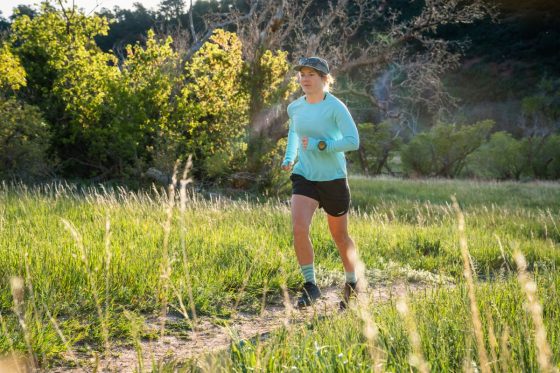
How to Choose Road-to-Trail Shoes
Surface
This is a guide for road-to-trail shoes, so all of our picks perform well on both surfaces, but the relative proportion of your time on each surface and the type of trail you plan to run could influence your choice. Will most of your miles be on pavement with just a little non-technical trail sprinkled in? A true road shoe that can handle light trails, like the Nike Pegasus 41, would be a good pick. Do you plan to run on mostly gravel or dirt roads? The adidas Terrex Agravic Speed Ultra or Altra Mont Blanc Carbon both excel in that arena, as does the Merrell Antora 4 for those seeking a women-specific fit. Will you find yourself on technical trails at some point during your road-to-trail run? The Inov8 Trailfly offers excellent grip in these conditions, and the Brooks Cascadia 19 and Hoka Torrent 4 also perform well when the trails get steeper and more technical.
Or maybe you just want one shoe for every surface outside of the most technical trails. In that case, we’d recommend going with our top overall pick, the Nike Pegasus Trail 5.
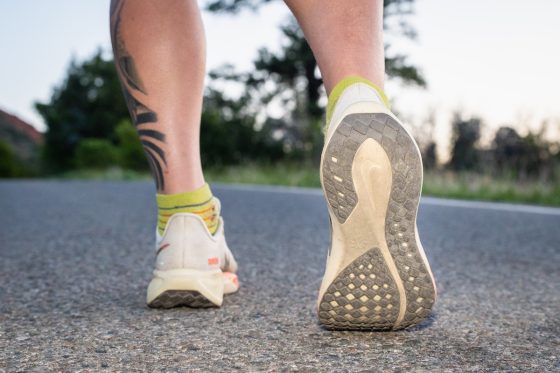
Use
In addition to maximizing fun, using shoes for their intended purpose is both a good way to extend their lifespan and boost your training. While versatility is one of the top things we look for in most of the shoes we review, the reality is that some shoes are better suited for different purposes.
If you’re looking for a shoe to race on relatively smooth terrain, we’d point you toward the adidas Terrex Agravic Speed Ultra or the Altra Mont Blanc Carbon — both are carbon-plated super shoes that will give you some extra juice when you’re hunting a PR. They’re lightweight, bouncy, and, of course, expensive, both costing upward of $200. Most of the other shoes on our list could be used for racing, too, but none of them would offer the same performance as these two.
For an everyday trainer that could double as a workout shoe, we loved the Nike Pegasus 41 and the Hoka Torrent 4. Both are light enough to move relatively quickly while still holding up over hundreds of miles.
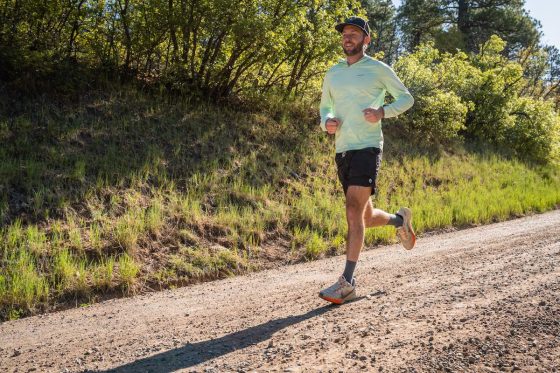
Cushion
A shoe’s cushion, typically characterized by its midsole foam and quantified by its stack height, is often considered its most important feature. Accordingly, companies spend a lot of time and money researching and developing the best foams for running shoes. In the era of highly cushioned shoes, we have entire guides devoted to the Best Cushioned Running Shoes and the Best Cushioned Trail Running Shoes, and several shoes with high stack heights and premium foams made it in this guide.
How much cushioning you need is likely dependent on what you’ll primarily be using the shoes for. If you plan on putting in lots of long efforts, a more cushioned shoe like the adidas Terrex Agravic Speed Ultra, which has a stack height of 42 millimeters, could be a good option. The Hoka Challenger 8 is another option with lots of cushion that our testers loved for everyday road-to-trail runs. If you’re seeking a more responsive, low-to-the-ground feel, meanwhile, a shoe like the Inov8 Trailfly or Merrell Antora 4, which each have a stack height of 29 millimeters, might suit your needs better. The Hoka Torrent 4, with 33 millimeters of stack height, strikes a nice balance between cushion and responsiveness.
The type of foam also matters. Our testers love the ReactX foam in the Nike Pegasus Trail 5 and Nike Pegasus 41. It’s one of the company’s premium foams, second only to the foam it uses in its racing super shoes. Our primary tester of the Altra Mont Blanc Carbon enjoyed the foam combo of the brand’s Ego Max and Ego Pro.
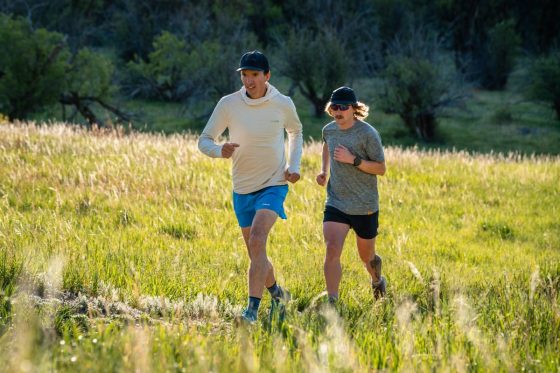
Drop
Drop refers to the difference in stack height between the heel and toe, and it can range from more than 10 millimeters to zero. Shoes with higher drop, like the 10 millimeters of the Nike Pegasus 41 or the 8 millimeters of the Hoka Challenger 8, offer more cushioning at the heel and are therefore typically better suited for heel strikers. A more moderate drop, like the 6 millimeters of the Brooks Cascadia 19 or the 5 millimeters of the Hoka Torrent 4, signifies the cushioning is spread more evenly throughout the shoe and can encourage a foot strike that lands near the middle or front of your foot. And then there are zero-drop shoes, like the Altra Mont Blanc Carbon, which has the same amount of cushioning at the heel and forefoot. Running in these shoes typically requires ample build-up before your leg muscles and tendons are ready to handle the majority of your miles in them.
Cost
Cost might be the first thing you consider when buying shoes. While it’s hard to find a quality shoe under $100 these days, the upper end of shoe price points can push $300, so there’s a lot of variation. To that end, we tried to include a range of shoes at a variety of price points in this guide, and we believe that even the lower-priced options are great shoes.
Our least expensive pick, the Hoka Torrent 4 at $130, is also among the most versatile, adept at handling pavement and more technical trails. While there’s nothing super fancy about this shoe, it’s a good, everyday pair that can rack up the miles for half the cost of the most expensive shoe in this guide. The Merrell Antora 4 ($140) is another shoe in this category. In the middle price range, you’ll find shoes like the Inov8 Trailfly ($150) and Brooks Cascadia 19 ($150), which have the traction to handle more technical trails, and the Nike Pegasus Trail 5 ($155), which boasts a stellar foam and outsole. And at the high end, the adidas Terrex Agravic Speed Ultra ($220) and Altra Mont Blanc Carbon ($260) are the most specialized, with premium foams and carbon plates that make them race-ready. We’d recommend them for anyone hunting fast times.
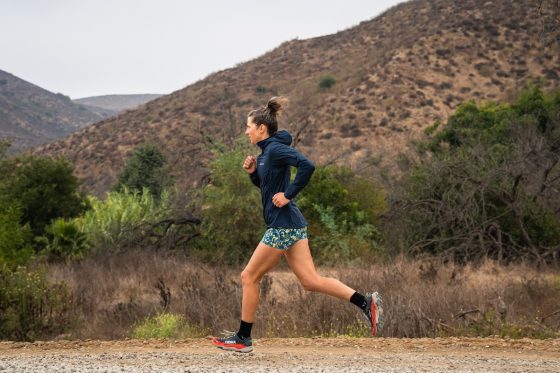
Why You Should Trust Us
To make our picks for this guide, we asked our highly experienced team of testers across the country which shoes they turned to for road-to-trail runs. Our testers run in several shoes each year, noting their fit, comfort, cushion, responsiveness, traction, and more. They run in every pair they recommend for at least 100 miles — and usually more — on every surface and in every condition imaginable. The shoes that made it into this guide are their standout choices for mixed-terrain runs. We’ll continue to update this guide based on our continued testing of new shoes that come on the market.
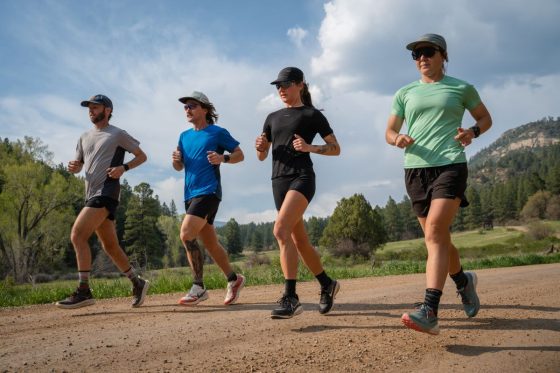
Frequently Asked Questions
Do I need road-to-trail shoes?
The running industry often makes you think you need the next big thing, and right now, one of them is a pair of road-to-trail shoes. While they certainly have benefits, you don’t need to buy a pair of shoes specifically for road-to-trail runs, or a pair that the brand specifically markets as “road-to-trail.” A pair you have right now — or a versatile, affordable shoe like the Hoka Torrent 4 — might do the trick.
The best road-to-trail shoes thread the needle between the two surfaces. They offer protection and stability on the trails, they’re not too clunky or luggy for the roads, and they strike a balance between cushion and responsiveness for both surfaces. In the view of our testers, the Nike Pegasus Trail 5 and Hoka Challenger 8 were the shoes that checked all of these boxes the best.
Can I just wear road or trail shoes for road-to-trail runs?
Yes! In fact, none of the shoes we selected for this guide are marketed specifically as road-to-trail shoes. Eight of them, including our top pick, the Nike Pegasus Trail 5, are trail shoes, and one of them — the Nike Pegasus 41 — is classified as a road shoe.
What all of these shoes have in common, of course, is good performance on both surfaces. That means they have some type of traction for the trails — and some of the luggier ones like the Inov8 Trailfly can handle more technical terrain — without being overbearingly sticky on pavement. Lots of road shoes and trail shoes are versatile enough to handle both surfaces. The Brooks Cascadia 19 is another shoe that can transition between the roads and more technical terrain with ease.
All that said, we also want you to get the most out of your shoe for the long haul, which means using it for its intended purpose. Our picks for road-to-trail shoes are purposefully versatile, but several aren’t meant for technical trails, and others aren’t meant for long efforts on the road.
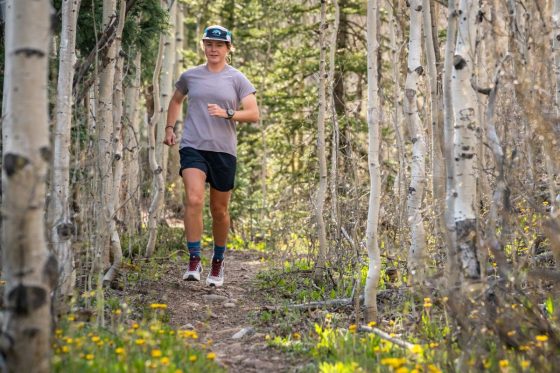
How should I choose a road-to-trail shoe?
You should first ask yourself what you plan to use the shoe for: mostly road running, mostly trail running, mostly gravel or dirt running, everyday miles, workouts and races, or some combination of all of these. A shoe like the adidas Terrex Agravic Speed Ultra or the Altra Mont Blanc Carbon would be an excellent choice for fast efforts on smooth terrain, whereas the Brooks Cascadia 19 would be better suited for runs that feature both roads and trails with rocks and roots.
Once you’ve determined your primary purpose for them, consider how the shoe fits and feels when you try it on for the first time. As a basic rule of thumb, you want a shoe to be comfortable out of the box and to get more comfortable as you break it in. You want a pair that’s secure enough to offer a comfortable ride on multiple surfaces without being constricting. Next, you want to determine your preference for cushioning. Are you seeking something with a more traditional low-to-the-ground trail feel, like the Inov8 Trailfly, or a more cushioned option like the Hoka Challenger 8? Overall, you want a shoe that’s comfortable and performs well on the surfaces you run.
What’s the best road-to-trail shoe?
The best road-to-trail shoe is the one that meets your needs and budget. For some people, that means going for a super shoe like the adidas Terrex Agravic Speed Ultra, while others just need the everyday simplicity of a shoe like the Merrell Antora 4.
Because of its versatility and comfort, our top pick for road-to-trail shoes was the Nike Pegasus Trail 5. It checks almost all the boxes we were looking for in a true road-to-trail shoe.
What’s a “gravel shoe”? Should I also be buying a pair of those?
No! “Gravel shoe” is just the latest branding trend that companies like to use to make their products seem new and different. Over the years, shoes that can handle pavement, dirt and gravel road, and mildly technical trails have been labeled hybrid shoes, road-to-trail shoes, door-to-trail shoes, all-terrain shoes, crossover running shoes, and, most recently, gravel shoes. There’ll be a new name for the same type of shoe in a few years, unless companies recycle an old one! Regardless of the label, all of the road-to-trail shoes we chose for this guide will serve you very well on gravel.
Call for Comments
- What’s your go-to shoe for multiple surfaces?
- What do you look for in a road-to-trail shoe?
Back to Our Best Road-to-Trail Running Shoe Picks
Best Road-to-Trail Shoes of 2025 by Robbie Harms.
🏃♂️ Recommended for Ultra Runners
As ultra runners, we’re always looking for tools and resources to support our training and racing goals. Check out this resource that fellow runners have found valuable.
FTC Disclosure: This post contains affiliate links. We may earn a commission if you purchase through these links at no additional cost to you. See our Affiliate Disclosure for details.

